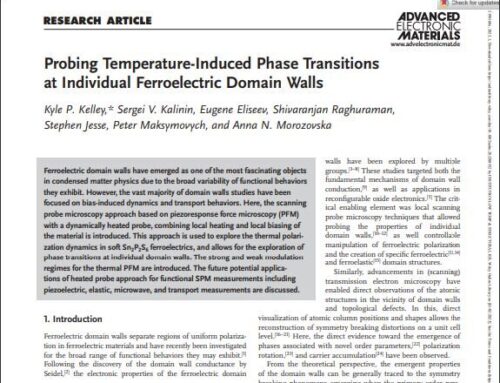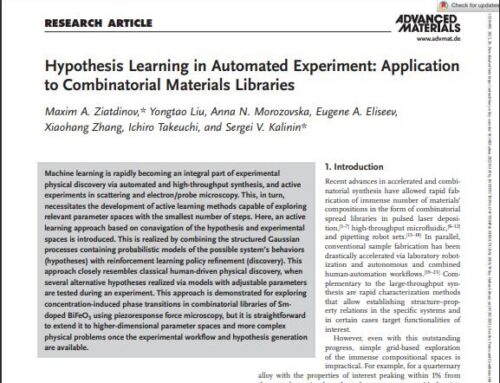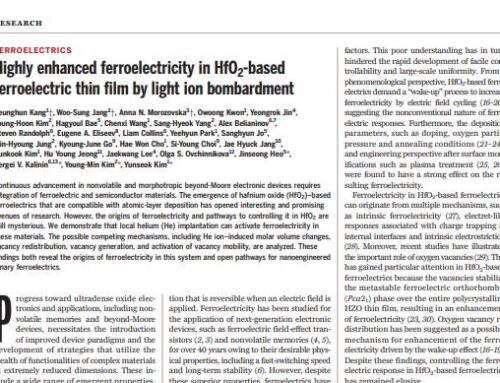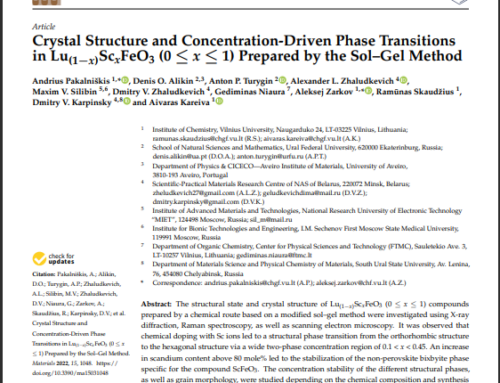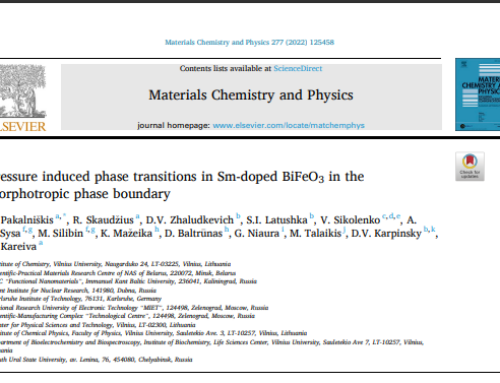Abstract: The review is focused on our predictions of nontrivial physical phenomena taking place in the nanostructure single-layer graphene on ferroelectric substrate, which are related with magnetic field. In particular we predicted that 180-degree domain walls in a strained ferroelectric film can induce p-n junctions in a graphene channel and lead to the unusual temperature and gate voltage dependences of the perpendicular modes v┴ of the integer quantum Hall effect. The non-integer numbers and their irregular sequence principally differ from the conventional sequence v┴ = 3/2, 5/3, … The unusual v┴-numbers originate from significantly different numbers of the edge modes, v1 and v2, corresponding to different concentration of carriers in the left (n1) and right (n2) ferroelectric domains of p–n junction boundary. The difference between n1 and n2 disappears with the vanishing of the film spontaneous polarization in a paraelectric phase, which can be varied in a wide temperature range by an appropriate choice of misfit strain originated from the film-substrate lattice mismatch. Next we studied the electric conductivity of the system ferromagnetic dielectric-graphene channel-ferroelectric substrate. The magnetic dielectric locally transforms the band spectrum of graphene by inducing an energy gap in it and making it spin-asymmetric with respect to the free electrons. It was demonstrated, that if the Fermi level in the graphene channel belongs to energy intervals, where the graphene band spectrum, modified by EuO, becomes sharply spin-asymmetric, such a device can be an ideal non-volatile spin filter. The practical application of the system under consideration would be restricted by a Curie temperature of a ferromagnet. Controlling of the Fermi level (e.g., by temperature that changes ferroelectric polarization) can convert a spin filter to a spin valve.
Title: Nontrivial magnetic field related phenomena in the single-layer graphene on ferroelectric substrate
Authors: Maksym V. Strikha, Anna N. Morozovska, Zhanna G. Zemska
DOI: https://doi.org/10.1063/10.0000704 Low Temperature Physics (2020) 46, 211 /Fizika Nizkikh Temperatur (2020) 46, 261–270
Preprint: https://arxiv.org/abs/2011.13791

